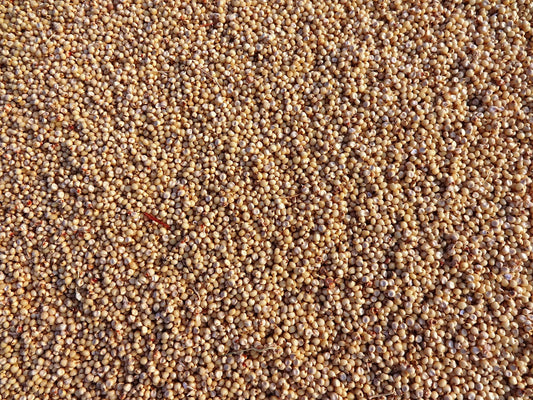If you're struggling with high grocery prices, there are ways to save money and still eat healthy meals.
Here are 5 more tips to help you cut back on costs at the store, even when inflation is making food more expensive.
1. Be Selective
We always encourage to eat more fruits and vegetables. They're not only delicious, but are also packed with vitamins, minerals & other essential nutrients. While fresh produce can be pricey, there are ways to make your food budget go further and still get all the benefits that fruit and veg provide.
One strategy is to choose frozen, canned, or dried fruits and vegetables. These options are often more affordable than fresh produce, and they still provide many of the same vitamins, minerals, and other nutrients. Just be sure to look for options that are lower in added sugars and salt, as these can add unnecessary calories to your diet.
Another way to save money on fruits & vegetables is to be flexible with your choices. Instead of always buying the same expensive produce, consider substituting a cheaper option. One idea may be to use cabbage instead of mixed greens in a salad or onions instead of shallots in a soup. Frozen berries are also a great option for smoothies - they are often less expensive than fresh berries and can be just as tasty.
It's also important to make sure you actually use the produce you buy. This is where frozen and canned produce can be especially useful, as they have a longer shelf life and are less likely to go to waste. Just be sure to use up your fresh produce first, so you don't end up throwing away money. If you find yourself with produce that is about to go bad, try freezing it or adding it to soups, fried rice, or eggs. By following these tips, you can save money on fruits and vegetables and still get all the nutrition your body needs.
2. Understand Unit Prices and How They Can Help You Save Money on Groceries
If you're not familiar with unit pricing, it's worth learning about. Unit pricing is the cost of an item based on its weight or size, and it's often displayed on the shelf next to the price of the item. This can be a useful tool for comparing different sizes and brands, so you can make the best decision for your budget.
For example, let's say you go through a lot of cereal every week. It might seem like a good idea to buy the bigger box, as it will cost more upfront but be cheaper per pound than the smaller box. But if you check the unit price, you might find that the smaller box is actually a better deal.
Unit pricing can also be useful for comparing different brands that offer their products in different sizes - it can help you find the option that makes the most sense for your budget. So the next time you're shopping, take a few minutes to check the unit price and see if it can help you save money on your groceries.
3. Understanding Food Expiration Dates

Food expiration dates can be confusing, but it's important to pay attention to them in order to make sure you're eating fresh, high-quality food. These dates, which often appear on food packages as "best if used by," "sell-by," "use-by," or "freeze-by," are actually not safety dates (except for infant formula) but are instead meant to indicate the freshness & quality of the food.
It's always a good idea to check the dates on food when you're shopping, and to make sure you're using up older products first when you're at home. This can help you save money, as you'll be able to enjoy your food at its freshest. Just remember that these dates are not strict rules for when to throw food away - if your food looks and smells fine, it's probably okay to eat. But if you have any doubts, it's better to be safe and throw it out.
4. Make the Most of the Food You've Got
If you're running low on food & don't want to make a trip to the grocery store, it's worth taking a look at what you already have in your pantry, fridge, and freezer. You might be surprised by how many options you have, even if it doesn't seem like there's much to eat.
Using up the food that you already have can not only save you money but can also help you to avoid waste. It might require a little extra effort to figure out what to make with that box of pasta or that bag of frozen broccoli, but it's well worth it.
5. Choose Convenience Wisely
It's natural to want to save time & effort in the kitchen, and that's where convenience items like pre-cut produce and ready-made sauces come in handy. While these items can be more expensive than buying the ingredients and preparing them yourself, there are times when the convenience is worth the extra cost. For example, if you're short on time and would otherwise end up ordering takeout or letting food go to waste, the extra expense of a jarred sauce or frozen vegetables might be justified.
When choosing convenience items though, it's important to consider the prices and make sure you're getting a good value for your money. In some cases, the premium for convenience may not be that high, and it can be worth it for the time and effort it saves you. And remember, you can often find convenience without paying more by choosing items like frozen vegetables, which are often less expensive than fresh produce.
In the end, it's up to you to decide how much convenience is worth to you. But by choosing wisely you can save money and still enjoy delicious, home-cooked meals.




